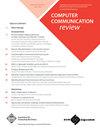数字接触追踪
IF 2.8
4区 计算机科学
Q3 COMPUTER SCIENCE, INFORMATION SYSTEMS
引用次数: 26
摘要
自2019冠状病毒病大流行开始以来,技术爱好者一直在推动数字接触者追踪,将其作为打破COVID-19传播链的关键工具。在这一推动力的推动下,许多国家和公司开发了能够进行数字接触者追踪的应用程序,目的是确定感染者与他人之间的传播链,并实现早期隔离。印度的AarogyaSetu、新加坡的TraceTogether、瑞士的SwissCovid等数字接触追踪应用程序已经被下载了数亿次。然而,这项技术还没有看到我们在大流行开始时所设想的影响。一些国家已经撤回了他们的应用程序,而另一些国家的应用程序使用率很低[12,17]。因此,谨慎的做法是询问接触追踪的技术前景是什么样的,以及缺失的部分是什么。本文试图承担这一任务。我们对数字接触追踪技术进行了高层次的回顾,这是一组在评估不同接触追踪技术时很重要的指标,并评估了不同技术在这组指标上的地位。我们的希望有两个方面:(a)接触者追踪应用程序的未来设计者可以使用这篇综述论文来了解技术前景;(b)研究人员可以确定并解决这一难题中缺失的部分,以便我们准备好面对COVID-19大流行的其余部分和未来的任何大流行。讨论的重点是识别个体之间联系的能力。这种接触者追踪的伦理、隐私和安全问题被简要地提到,但没有详细讨论。本文章由计算机程序翻译,如有差异,请以英文原文为准。
Digital contact tracing
Since the start of the COVID-19 pandemic, technology enthusiasts have pushed for digital contact tracing as a critical tool for breaking the COVID-19 transmission chains. Motivated by this push, many countries and companies have created apps that enable digital contact tracing with the goal to identify the chain of transmission from an infected individual to others and enable early quarantine. Digital contact tracing applications like AarogyaSetu in India, TraceTogether in Singapore, SwissCovid in Switzerland, and others have been downloaded hundreds of millions of times. Yet, this technology hasn't seen the impact that we envisioned at the start of the pandemic. Some countries have rolled back their apps, while others have seen low adoption [12, 17]. Therefore, it is prudent to ask what the technology landscape of contact-tracing looks like and what are the missing pieces. We attempt to undertake this task in this paper. We present a high-level review of technologies underlying digital contact tracing, a set of metrics that are important while evaluating different contact tracing technologies, and evaluate where the different technologies stand today on this set of metrics. Our hope is two fold: (a) Future designers of contact tracing applications can use this review paper to understand the technology landscape, and (b) Researchers can identify and solve the missing pieces of this puzzle, so that we are ready to face the rest of the COVID-19 pandemic and any future pandemics. A majority of this discussion is focused on the ability to identify contact between individuals. The questions of ethics, privacy, and security of such contact tracing are briefly mentioned but not discussed in detail.
求助全文
通过发布文献求助,成功后即可免费获取论文全文。
去求助
来源期刊

ACM Sigcomm Computer Communication Review
工程技术-计算机:信息系统
CiteScore
6.90
自引率
3.60%
发文量
20
审稿时长
4-8 weeks
期刊介绍:
Computer Communication Review (CCR) is an online publication of the ACM Special Interest Group on Data Communication (SIGCOMM) and publishes articles on topics within the SIG''s field of interest. Technical papers accepted to CCR typically report on practical advances or the practical applications of theoretical advances. CCR serves as a forum for interesting and novel ideas at an early stage in their development. The focus is on timely dissemination of new ideas that may help trigger additional investigations. While the innovation and timeliness are the major criteria for its acceptance, technical robustness and readability will also be considered in the review process. We particularly encourage papers with early evaluation or feasibility studies.
 求助内容:
求助内容: 应助结果提醒方式:
应助结果提醒方式:


